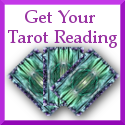Ask most people “What is tarot?” and you’ll likely get the same answer: 78 cards, divided into the Major and Minor Arcanas, most likely originating in Europe in the 1400s, give or take. As accurate as that is, it doesn’t address the heart of the question. People want to understand what makes tarot so special, and what makes tarot reading so accurate.
Tarot Symbology
The primary thing that makes tarot so engaging to me is the symbols contained within each card. Tarot is a pictorial language, designed to evoke an emotional response immediately. It’s the reason that even the uninitiated cringe at the sight of the Devil or the Tower. The images speak to us at a subconscious level, capturing our imagination and telling us what we need to know, regardless of the situation.
Depending on who you talk to, this image recognition can be explained spiritually or scientifically. Tarot covers the breadth of human experience, and this leads many people to believe that God, Goddess, or the Universe plays a role in the way tarot works. We’re led to draw these cards, at this very moment. We see what we need to see.
Others believe that science and probability play a role. Jung did a huge amount of research into human personality, and so much of it can relate to tarot. Others simply look at the numbers. 78 cards, in an endless amount of possible combinations. Add in reversals and tarot is a never-ending world of possibilities, ready to touch those who are ready to look and listen.
No matter what you believe, the mystery is all part of the fun of tarot and tarot reading.
Tarot and the Occult
Besides the meaning of the images that we naturally identify with, many others have influenced the tarot decks we see today. Nearly all decks (with the exception of the Marseilles decks) in production today have their roots in the Golden Dawn. Both Arthur Waite (creator of the Rider Waite Smith deck) and Aleister Crowley (creator of the Thoth deck) started off in the Golden Dawn, but their decks are very different. Most modern decks are influenced by the symbols and meanings drawn from those two tarot decks.
Their work included astrological, numerological, and magickal associations with each tarot card. Modern tarot deck artists of different spiritual backgrounds have added even more associations, including spirit guides, runes, and pagan holidays.
The Meaning of Tarot
Tarot is full of meaning, as much the inherent meaning as the meaning we put into it. If the King of Cups reminds you of your ex, then you will naturally be cautious when that card appears. Once you get a hold of what the symbols mean, and what the cards can mean, you are free to explore what those symbols mean to you personally. Tarot is an interactive story, where your life experience and knowledge plays an important part in gleaning meaning from the tarot cards.
What does tarot mean to you? How would you explain the tarot to others?
Sign up for the Tarot Musings Newsletter for special offers, updates, news, and more!



